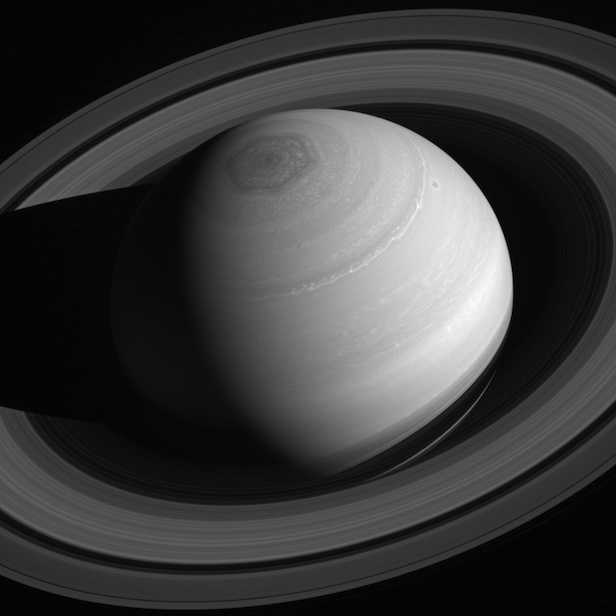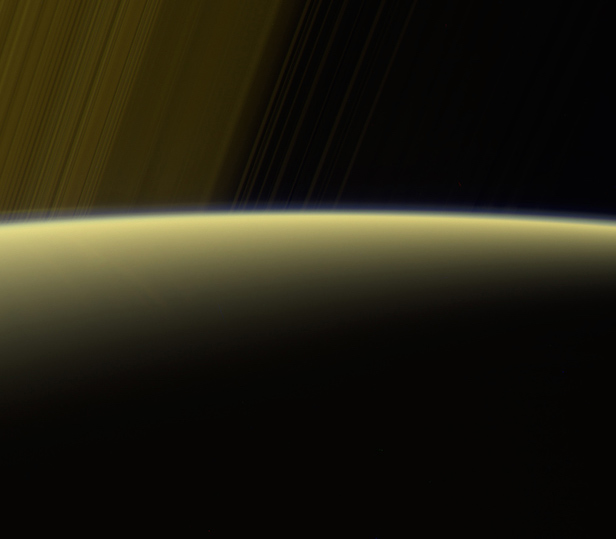Cassini uncovers unusual magnetic field at Saturn
The NASA spacecraft has revealed an elusive side to the ringed planet

Here shows Saturn’s north pole vortex and hexagon coupled with it’s rings, producing an amazing spectacle. Image credit: NASA/JPL-Caltech/Space Science Institute
As NASA’s Cassini spacecraft continues on its Grand Finale, consisting of 22 weekly dives through Saturn’s rings, the results have yielded some intriguing results. The headlining finding shows that Saturn’s magnetic field has no discernible tilt, which doesn’t allow astronomers to calculate the true length of a day on the ringed planet.
Now on its fifteenth orbit, the spacecraft has also unveiled the mystery of the gas giant’s atmosphere. There are also encouraging clues to the composition and structure of Saturn’s rings. Linda Spilker, Cassini Project Scientist at NASA’S Jet Propulsion Laboratory (JPL), says, “the data we are seeing from Cassini’s Grand Finale are every bit as exciting as we hoped, although we are still deep in the process of working out what they are telling us about Saturn and its rings.”
As Cassini sweeps over Saturn’s surface, the magnetometer instrument has collected surprising observations that tell us the gas giant’s magnetic field is well aligned with the planet’s rotation axis. At the start of the Grand Finale, the lower limit of this tilt was set at 0.06 degrees, and the results show it’s even lower than that.
This in turn defies our theoretical understanding of how Saturn’s magnetic field is generated, as some tilt is needed to sustain the flow of liquid metallic hydrogen deep towards the planet’s centre. Without any tilt, it is thought that the currents would eventually abate, killing off all magnetic fields.

This false-colour image from Cassini shows Saturn’s sunlit horizon with its rings. Image credit: NASA/JPL-Caltech/ Space Science Institute
It was originally thought that once the tilt was discovered, it would tighten the parameters of how long a day on Saturn is, but yet the search continues. Other early analysis of its gravity data shows more inconsistency, suggesting that there is something unforeseen occurring in the planet’s structure.
As for the planetary rings, the Cosmic Dust Analyzer (CDS) has only recently been sent head-on into the dusty D ring, because previously the antenna shielded the valuable equipment. The CDS instrument went on to detect miniscule particles, and scientists hope this will provide more detail about their composition.
Cassini’s Ion and Neutral Mass Spectrometer (INMS) has obtained – and continues to obtain – samples from the planet’s outer atmosphere, also known as the atmosphere. Although the data has not been fully analysed yet, when Cassini crashes into Saturn’s atmosphere after it’s twenty-second orbit, much more precise detail will be given to the Cassini scientists.
Along with all this exciting information, there are also plenty of breath-taking images of Saturn taken by Cassini imaging cameras. Each image shows the highest resolution pictures ever taken of Saturn, and they are all available to look at on NASA’s website.
Keep up to date with the latest space news in All About Space – available every month for just £4.99. Alternatively you can subscribe here for a fraction of the price!




